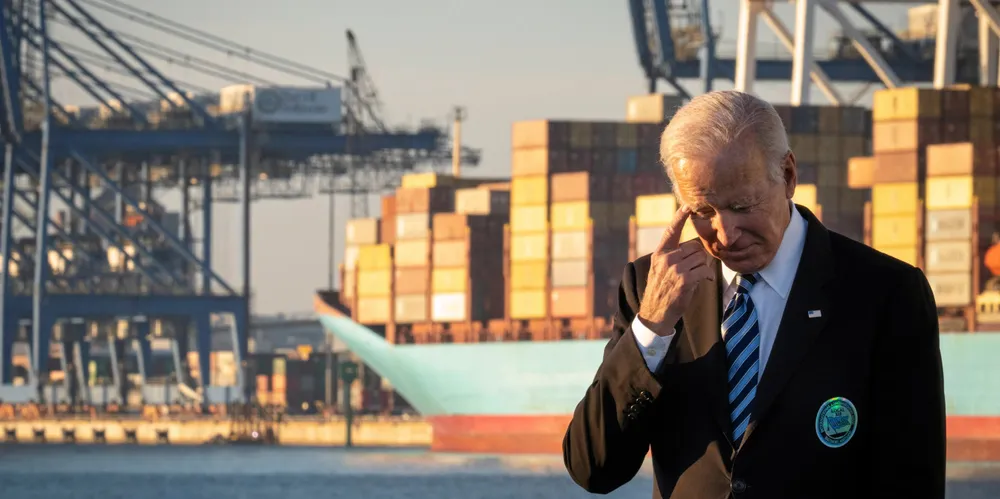'Crisis of confidence' | How US offshore wind can get its mojo back
With negatives mounting in the northeast and a tepid debut in the Gulf, analysts suggest measures ranging from contract renegotiation to suspension of the Jones Act as ways to get the American sector motoring again

The US offshore wind industry is facing a crisis of confidence as bad news mounting in its Atlantic coastal heartland spilled over into the lacklustre performance of the Gulf of Mexico auction in August.
Yet the auction held 29 August underperformed even those expectations, attracting a total of three bids, all for the same Lake Charles lease off the coast of Louisiana, with two leases off Galveston, Texas, completely ignored.
German energy giant RWE walked away with the Lake Charles lease for only $5.6m – around $56/acre – the cheapest paid for offshore wind acreage in nearly a decade.
“Something really has happened to just bring down confidence in the US offshore wind markets in general,” said Signe Sorensen, senior research analyst at Danish analytics firm Aegir Insights.
“Trouble in the Northeast has created some nervousness,” she said.
The global sector has been buffeted by headwinds of inflation and rising costs of financing projects as well as supply chain turmoil fomented by the war in Ukraine driving demand for renewable energy.
In the US, though, those headwinds are accelerated by policy and regulatory quirks, including the Jones Act that prohibits foreign-flagged vessels from calling in at consecutive domestic ports or points fixed to the outer continental shelf, including offshore turbines.
Perfect storm
As the US still lacks installation vessels, the sector has to rely on foreign-flagged vessels that must remain at sea and be supplied with components by feeder barges, generally considered a costlier, slower, and riskier solution.
“There has not been enough investment in offshore component fabrication to facilitate the additional” tax credits offered in the IRA, said Philip Totaro, CEO of data analytics firm IntelStor.
While rising interest rates are affecting all offshore wind markets, they are more of a problem in the US as the economic “headroom” in the US projects is lower, Nipper said, referencing cutthroat pricing in state procurement rounds.
“The perfect storm is brewing in offshore in general,” said Nipper. “And I can tell you in the US it is brewing more than anywhere else right now.”
Sector fallout
Equinor-BP’s 1.2GW Beacon Wind would gain an offshore wind renewable energy credit (OREC) worth $190/MWh, with ratepayers expected to fork over an extra $40 annually to pay for it.
Amid warnings that the drip-drip of bad news has the potential to deter investors from the US sector, the obvious question is – how can things improve?
Back on track
Samantha Woodworth, senior wind energy analyst for research consultancy Wood Mackenzie, said that “contract renegotiations are a good place to start” in getting the sector back on track.
“Allowing for rebids as well and allowing those bid prices to be indexed (tied to inflation) will also help ensure that there’s no need to do this all over again.”
Woodworth also highlights fast-tracking new manufacturing capacity and ramping guidance on IRA-linked tax credits from the US Treasury Department.
Totaro highlights lowering financing costs as a key factor.
“Interest rate reductions would improve the financial health for companies and their project pipelines,” said Totaro.
“The near-term well-being of the offshore wind sector is now in the hands of the US Federal Reserve.”
He also advocates for suspending the Jones Act for a decade to enable the US sector the chance to learn from its global counterparts.
“Europe and Asia are ahead on offshore wind knowledge, experience, investment, and infrastructure to support offshore wind project construction,” he said.
“The only way to facilitate a portion of the technology and knowledge transfer to the US is to suspend the Jones Act.”
Despite the recent turmoil, though, most analysts agree the sector eventually has a rosy future.
Road ahead
The Bureau of Ocean Energy Management (BOEM), lead regulator of energy development in US waters, has maintained a brisk pace of auctioning acreage and facilitiating project approvals, and already four major projects have been cleared for takeoff.
Two – the 132MW South Fork and 800MW Vineyard Wind 1 – have gone into offshore construction and are expected to begin powering the grid before the end of the year.
Future auctions are anticipated in the Central Atlantic and Gulf of Maine on the East Coast and Oregon on the west.
Kris Ohleth, executive director of think tank Special Initiative for Offshore Wind, looks to the sector’s track record for guidance.
“I am confident that this time and challenge will also be overcome, making way for a more robust and sustainable industry.”
(Copyright)